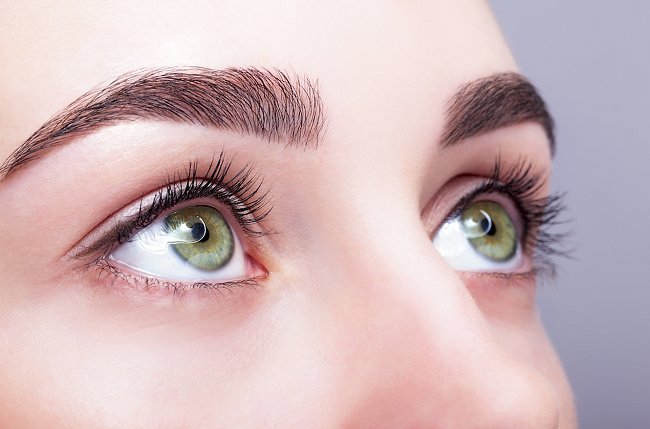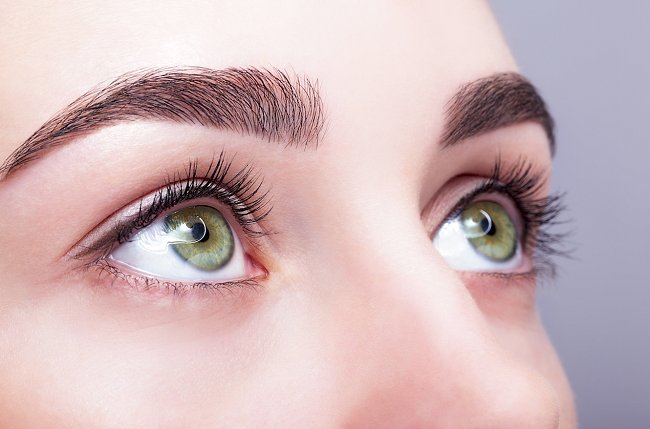โรคต้อหิน glaucoma
โรคต้อหิน glaucoma
โรคต้อหิน glaucoma หมายถึงโรคที่มีการเสื่อมของประสาทตาเนื่องจากความดันในตาสูง หรือบางคนความดันตาก็ไม่ได้สูงหลายคนคุ้นเคยกับคำว่าต้อกระจกมากกว่าต้อหิน ต้อกระจกเป็นภาวะที่เลนส์ตาเราขุ่นมัวเหมือนกระจกฝ้าทำให้เห็นไม่ชัด
การทำงานของตา
การที่จะเข้าใจโรคต้อหินจะต้องเข้าใจถึงโครงสร้างของตา ตาของเรามีลักษณะกลม มีเปลือกตาขาว (sclera ) หุ้ม
อยู่ภายนอก ส่วนหน้าของลูกตาซึ่งเป็นส่วนที่เรามองเห็น จะมีเยื่อบางๆหุ้มอยู่เรียกเยื่อนี้ว่า conjunctiva ถัดจากนั้นเป็นชั้นที่เรียกว่า กระจกตา (cornea) เป็นทางให้แสงผ่านชั้นนี้หากขุ่นมัวเราสามารถผ่าตัดเปลี่ยนได้ ถัดจากนั้นก็จะเป็นรูม่านตา pupil ซึ่งจะปรับปริมาณแสงที่ผ่านถ้าสว่างมากรูม่านตาก็จะเล็ก หากมือรูม่านตาก็จะกว้างเพื่อให้แสงผ่านเข้าตามากขึ้น แสงจะผ่านไปเลนส์ lens และไปที่จอรับภาพ retina ในตาจะมีน้ำเลี้ยงเรียก aqueous humor ซึ่งเหล่าเลี้ยงเลนส์ กระจกตา และจะถูกดูดซึมตามท่อข้าง iris muscle ทำให้มีความสมดุลของน้ำในตา
น้ำตาและน้ำเลี้ยงตาเหมือนกันหรือไม่
น้ำตาเป็นน้ำที่สร้างจากต่อมน้ำตาและหล่อเลี้ยงภายนอก ส่วนน้ำเลี้ยงตาจะอยู่ในลูกตาไม่ออกสู่ภายนอก น้ำเลี้ยงตาจะหล่อเลี้ยง กระจกตา เลนส์และม่านตา
ต้อหินคืออะไร
ต้อหินเป็นภาวะที่เกิดจากความดันในลูกตาสูงขึ้นและมีการเสื่อมของประสาทต าและสูญเสียการมองเห็น ความดันในตาที่สูงจะกดดันเส้นประสาทตา (optic nerve)ให้เสื่อม ความดันสูงเป็นเวลานานประสาทตาก็จะเสื่อมทำให้สูญเสียการมองเห็น การสูญเสียการมองเห็นจะเริ่มที่ขอบนอกของลานสายตา ส่วนตรงกลางภาพยังเห็นชัด หากไม่ได้รักษาการมองเห็นจะจะได้ภาพเล็กลง การเปลี่ยนแปลงจะค่อยๆเป็นโดยที่ผู้ป่วยไม่รู้ตัว โดยมากมักจะเป็นสองข้าง อาจจะเป็นข้างใดข้างหนึ่งก่อน
การมองเห็นของคนปกติ
การมองเห็นของคนเป็นต้อหิน
การดำเนินของต้อหิน
ต้อหินชนิดเรื้อรังโดยทั่วไปไม่มีอาการรุนแรง เพียงแค่สายตาค่อยๆมัวลงอย่างช้าๆ มีลานสายตาแคบลงผู้ป่วยจะมองเห็นแคบลงๆ ซึ่งผู้ป่วยอาจใช้กลอกตาหรือหันหน้าช่วย จึงทำให้ไม่รู้สึกว่าตัวเองมีความผิดปกติของสายตาเกิดขึ้นแล้ว
ขั้นสุดท้าย ตาบอดมองไม่เห็นแล้ว ยังมีอาการเจ็บปวด เคืองตา ยังความทรมานแก่ผู้ป่วยเพิ่มขึ้นอีก
Glaucoma Defined
What is Glaucoma?
Glaucoma is a group of diseases that damage the eye’s optic nerve and can result in vision loss and blindness. However, with early detection and treatment, you can often protect your eyes against serious vision loss.
The optic nerve
The optic nerve
The optic nerve is a bundle of more than 1 million nerve fibers. It connects the retina to the brain. (See diagram above.) The retina is the light-sensitive tissue at the back of the eye. A healthy optic nerve is necessary for good vision.
How does the optic nerve get damaged by open-angle glaucoma?
Several large studies have shown that eye pressure is a major risk factor for optic nerve damage. In the front of the eye is a space called the anterior chamber. A clear fluid flows continuously in and out of the chamber and nourishes nearby tissues. The fluid leaves the chamber at the open angle where the cornea and iris meet. (See diagram below.) When the fluid reaches the angle, it flows through a spongy meshwork, like a drain, and leaves the eye.
In open-angle glaucoma, even though the drainage angle is “open”, the fluid passes too slowly through the meshwork drain. Since the fluid builds up, the pressure inside the eye rises to a level that may damage the optic nerve. When the optic nerve is damaged from increased pressure, open-angle glaucoma-and vision loss—may result. That’s why controlling pressure inside the eye is important.
Another risk factor for optic nerve damage relates to blood pressure. Thus, it is important to also make sure that your blood pressure is at a proper level for your body by working with your medical doctor.
Fluid Pathway
Fluid pathway is shown in teal.
Can I develop glaucoma if I have increased eye pressure?
Not necessarily. Not every person with increased eye pressure will develop glaucoma. Some people can tolerate higher levels of eye pressure better than others. Also, a certain level of eye pressure may be high for one person but normal for another.
Whether you develop glaucoma depends on the level of pressure your optic nerve can tolerate without being damaged. This level is different for each person. That’s why a comprehensive dilated eye exam is very important. It can help your eye care professional determine what level of eye pressure is normal for you.
Can I develop glaucoma without an increase in my eye pressure?
Yes. Glaucoma can develop without increased eye pressure. This form of glaucoma is called low-tension or normal-tension glaucoma. It is a type of open-angle glaucoma.
Who is at risk for open-angle glaucoma?
Anyone can develop glaucoma. Some people, listed below, are at higher risk than others:
African Americans over age 40
Everyone over age 60, especially Mexican Americans
People with a family history of glaucoma
A comprehensive dilated eye exam can reveal more risk factors, such as high eye pressure, thinness of the cornea, and abnormal optic nerve anatomy. In some people with certain combinations of these high-risk factors, medicines in the form of eyedrops reduce the risk of developing glaucoma by about half.
Glaucoma Symptoms
At first, open-angle glaucoma has no symptoms. It causes no pain. Vision stays normal. Glaucoma can develop in one or both eyes.
Without treatment, people with glaucoma will slowly lose their peripheral (side) vision. As glaucoma remains untreated, people may miss objects to the side and out of the corner of their eye. They seem to be looking through a tunnel. Over time, straight-ahead (central) vision may decrease until no vision remains








































